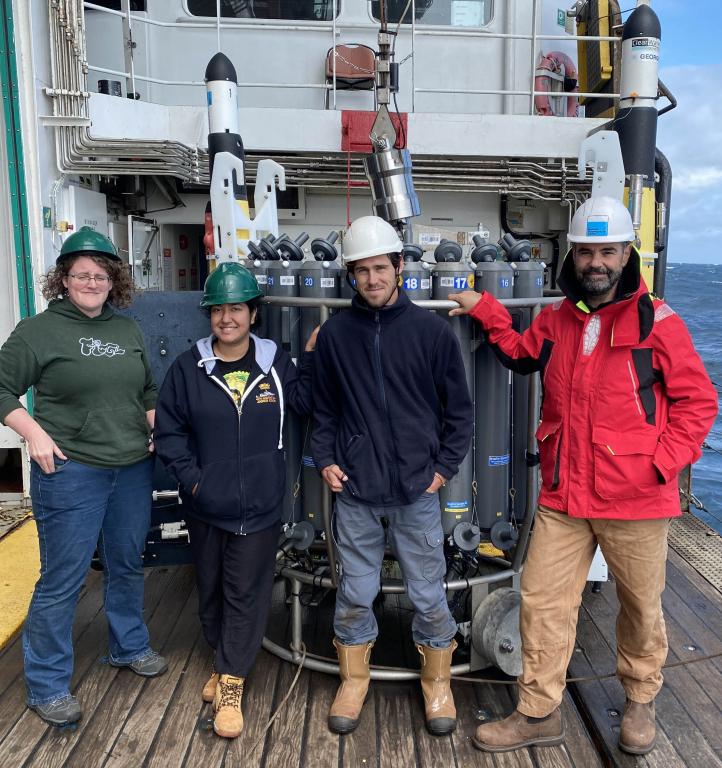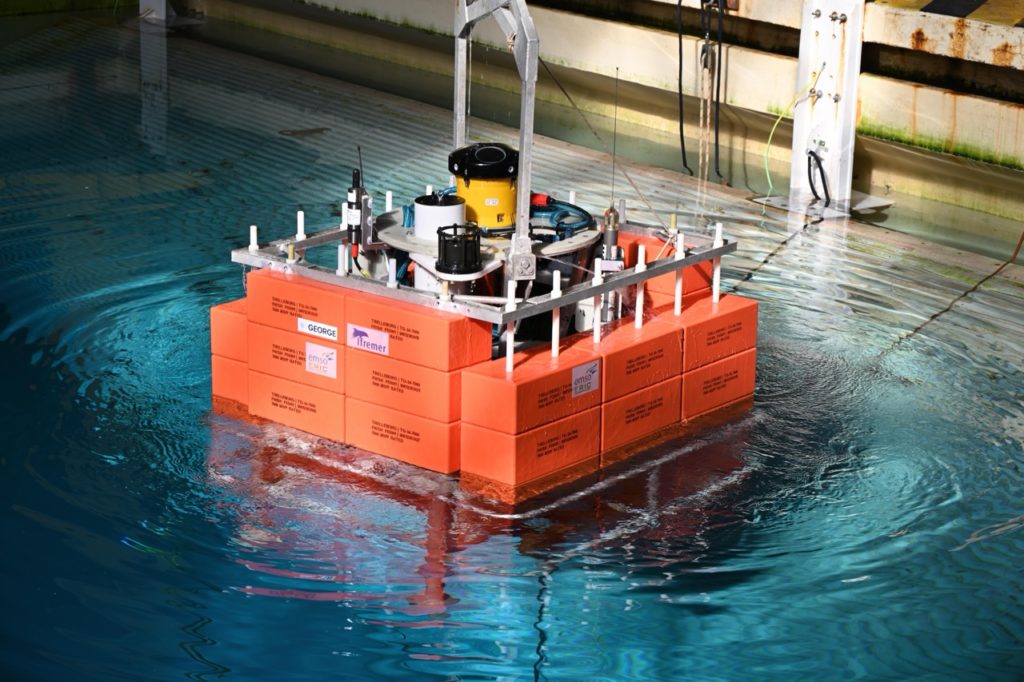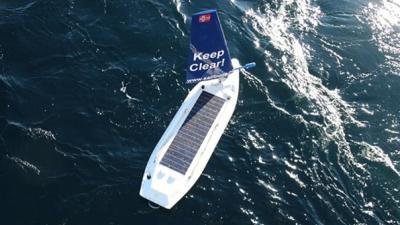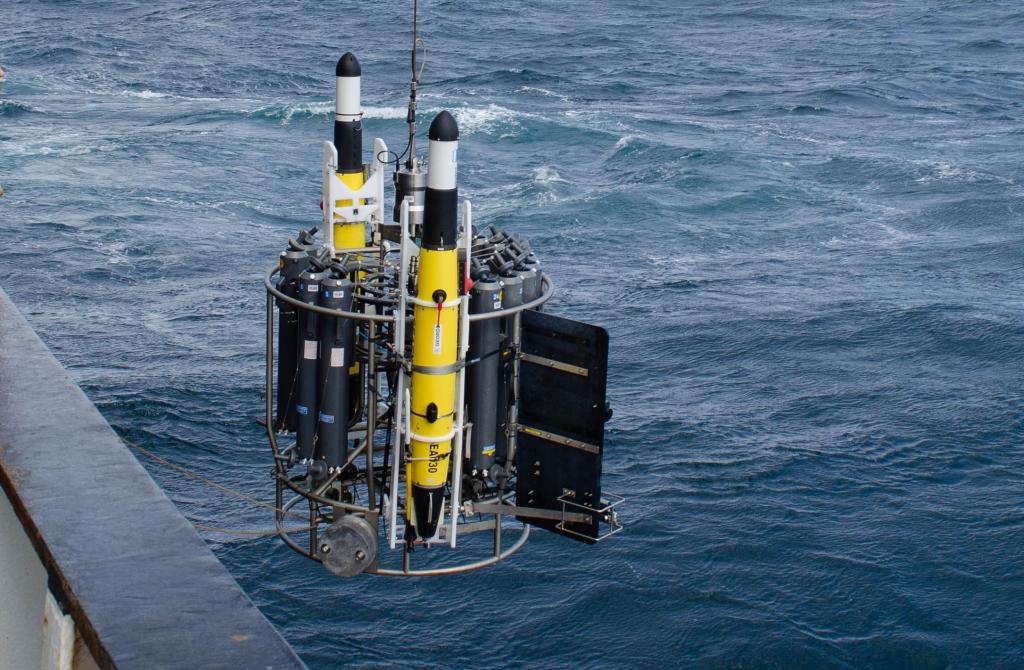By Dr Socratis Loucaides.
The ocean absorbs nearly a quarter of the carbon dioxide released by human activity, playing a vital role in regulating our Earth’s climate. But to understand and respond to climate change, we need much more precise, continuous and wide-reaching data about how the ocean stores and cycles carbon.

Ocean robotics, with advanced sensing capability, can help us do just this and at the National Oceanography Centre (NOC), as part of the GEORGE project, we’re leading the charge.
We’ve set sail, as part of the 40th anniversary research expedition on the NOC-run Porcupine Abyssal Plain Sustained Observatory (PAP-SO – one of the world’s few long-term deep-ocean monitoring sites) to test an ambitious suite of new autonomous sensing capabilities.
During our four-week voyage on the RRS James Cook to PAP-SO, we’ll be deploying autonomous and remote platforms including SeaExplorer underwater gliders, special biogeochemical Argo Floats, a multi-sensor instrumentation module (the EMSO Generic Instrument Module, or EGIM, and a surface mooring.
On the way, we’ll be joined by a Sailbuoy uncrewed surface vessel (USV), deployed out into the Northeast Atlantic from shore.

A new era of ocean observation
The goal? Enabling high-resolution biogeochemical observations, from the seabed to surface.
It’s a key part of the Horizon Europe-funded GEORGE project, which is working on new ways to observe the ocean in a way that’s more systematic, long-term, sustainable and better integrated across existing ocean research infrastructures.
It’s about next generation instruments, tools and methods for observing the ocean in a higher resolution than we’ve ever been able to before.
That means bringing together academia and industry and major European Research Infrastructure Consortiums (ERICs) like Euro-Argo (focused on profiling floats), the European Multidisciplinary Seabed Observatory and the Integrated Carbon Observation System (of which PAP-SO is a member station), to develop and harmonise these new technologies.

Why do we need better, lower-cost sensors?
Currently, reliable, high-performance, low-cost autonomous sensors for key carbon parameters, particularly dissolved inorganic carbon and total alkalinity, are lacking.
These are essential for understanding carbon cycling, ocean acidification and the exchange of CO2 between the ocean and the atmosphere. Without this data, there can be large uncertainties in the calculations we make about the carbon system.
So, our gole is to develop and validate new autonomous sensors and observing approaches to better measure these crucial ocean variables.
Real-world testing at PAP-SO
A critical step is putting them to the test in the real world, which is where PAP-SO is ideal. The site’s long history – it’s the world’s longest abyssal time-series – makes it an ideal "testbed" for new sensors and platforms.

We are able to compare the new data against reliable past observations to confirm their accuracy, performance and reliability in the challenging deep-sea environment.
A particularly unique and exciting aspect of this deployment is that it will bring together multiple autonomous platforms (moorings, USVs, gliders, floats, seabed landers and the research vessel) at the same location, measuring the ocean carbon system across the water column in time and space.
This will allow scientists to contrast surface measurements with those taken at the seabed, and throughout the 5,000 m water column.
But it will not be a walk in the park. PAP-SO is in the deepest part of the Atlantic, at nearly 5 km deep, and is regularly exposed to harsh conditions, including large waves and winter storms.
This makes it a real test for autonomous equipment!

Understanding the data, validating the sensors
The data we collect using the new sensors during this expedition will be carefully validated against measurements taken directly from the research ship and using "gold standard" analytical techniques, as well as the historical data at PAP-SO to evaluate their performance and robustness in a real world environment.
While we’ll bring most of the platforms back, the sensors and samplers we deploy as part of the GEORGE project on the EGIM and PAP mooring will remain on site, collecting observations, until the next, annual, PAP-SO visit in June 2026.

Future plans – a connected ocean
The ultimate goal is to one day enable cross-platform communication and autonomous decision making. Although this is beyond the project’s objectives it is hoped that lessons learned from the PAP-SO expedition will inform how this could be done in the future. This new capability will enable platforms to adapt their observing behaviour dynamically, according to what they sense and what other platforms around them are sensing..
Generating results
We can’t wait to deploy all these cutting-edge technologies at the PAP-SO and see the results that will be generated during the mission and over the next year.
Our efforts are supporting the GEORGE project and the European ocean observing community, paving the way for more sustainable, cost-effective and high-quality ocean carbon monitoring.
By advancing autonomous technologies and making data more accessible and usable, we’re supporting better climate models, smarter policies and wider public engagement in climate action.